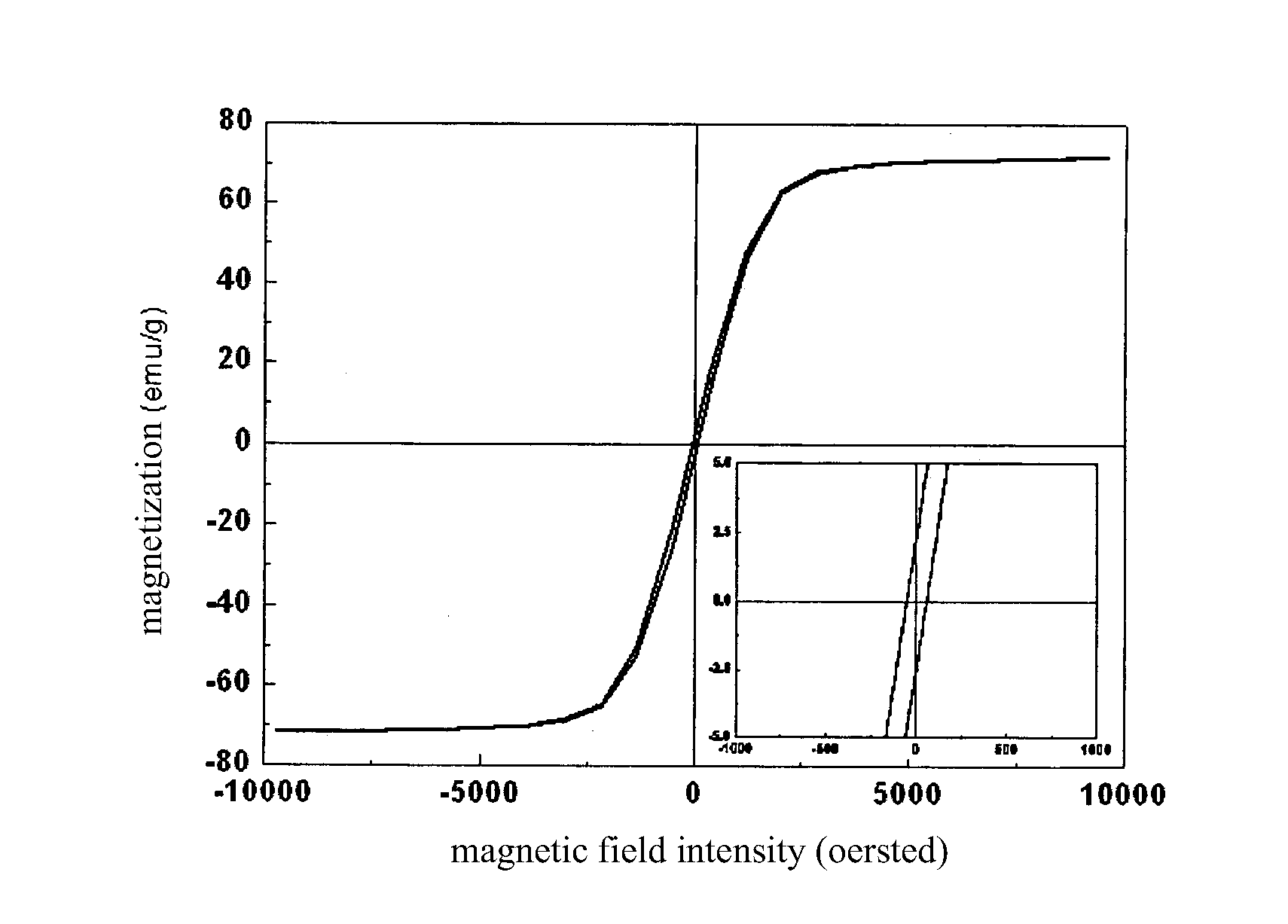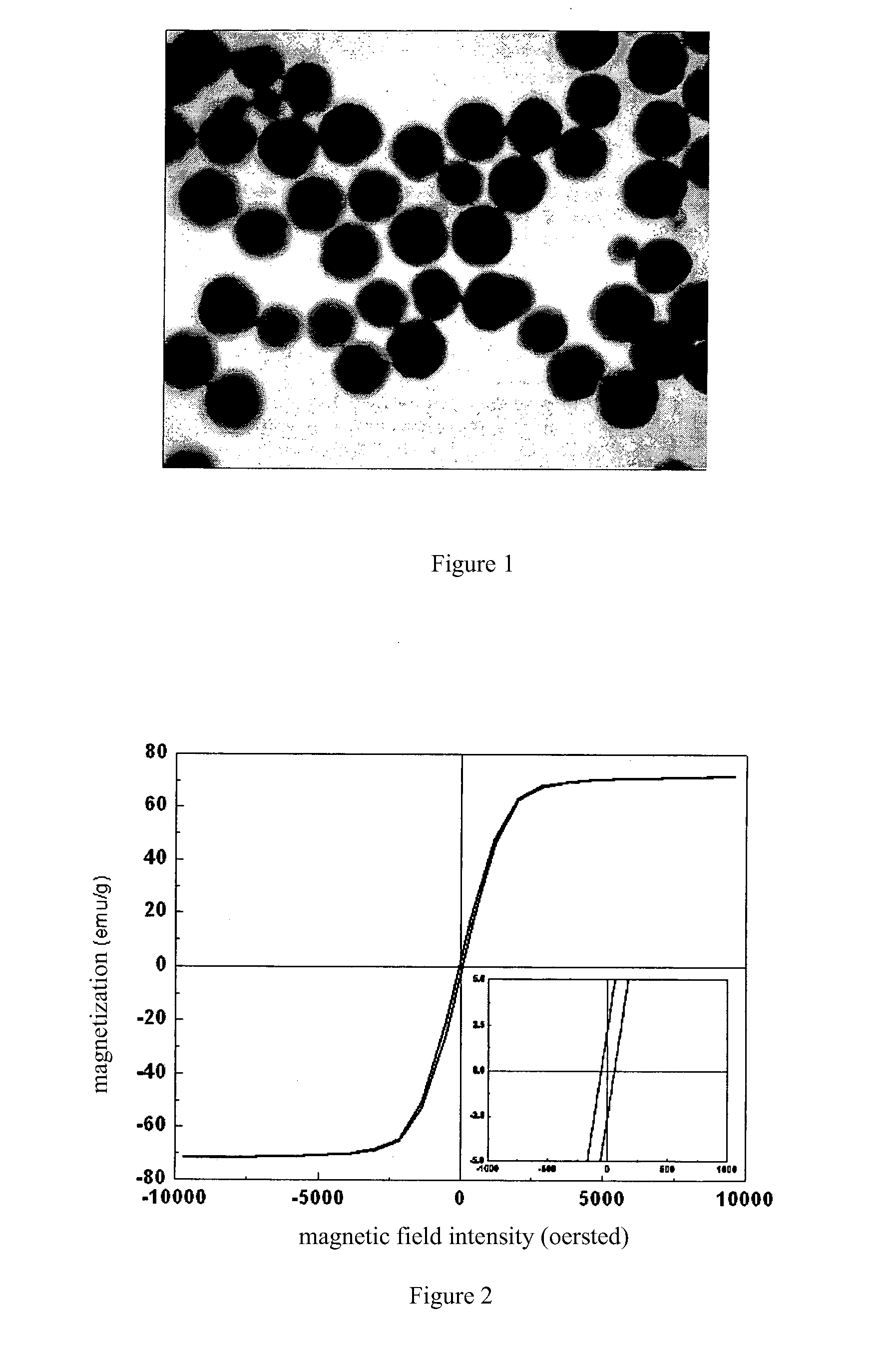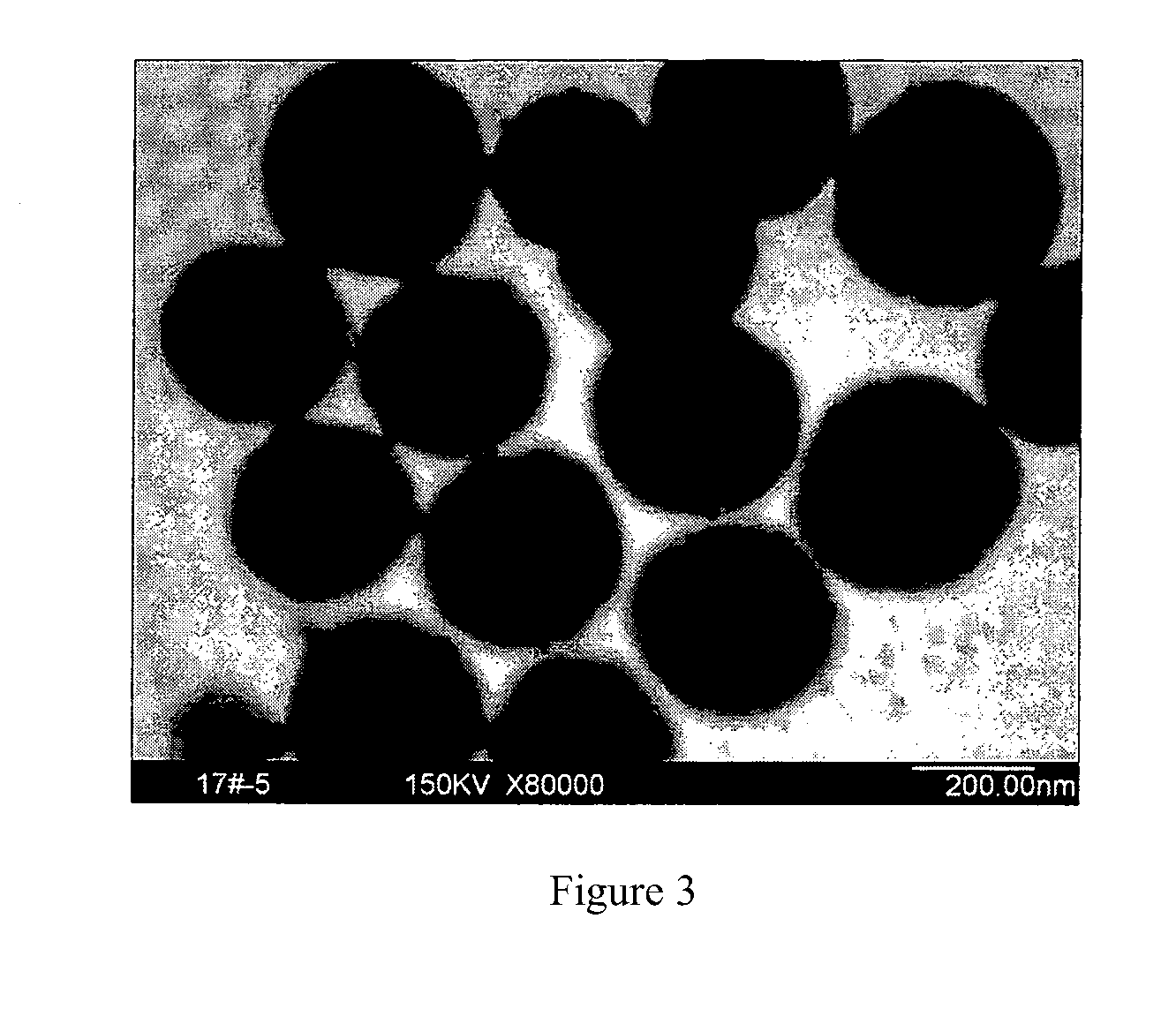Preparation Method of Ferroferric Oxide Magnetic Nanospheres
a technology of ferroferric oxide and magnetic nanospheres, which is applied in the field of preparation and synthesis of inorganic materials, can solve the problems of poor dispersion, limited application in biology, and challenge in synthesis of magnetite nanospheres, and achieves good magnetic response and superparamagnetism, easy to obtain raw materials, and good dispersion in water.
- Summary
- Abstract
- Description
- Claims
- Application Information
AI Technical Summary
Benefits of technology
Problems solved by technology
Method used
Image
Examples
example 1
[0037]1.35 g of hydrated ferric chloride was dissolved in 40 ml of glycol at ambient temperature, and then 1 g of urea and 1 g of polyethylene glycol were dissolved in the abovementioned solution and mixed uniformly. The mixed solution was entirely transferred into a reaction autoclave with a capacity of 50 ml, sealed, and then placed into a heating device at 200° C. for 8 hours. After the reaction system was naturally cooled down to ambient temperature, the product was taken out and separated, and then washed with anhydrous ethanol and water three times respectively. The resulting product was then redispersed into water. The analysis showed that the product was magnetite in morphology of sphericity, with a uniform particle diameter of 260 nm in average and a saturation magnetization of 71.5 emu / g. The TEM photograph thereof was shown in FIG. 1, and the magnetic hysteresis loop was shown in FIG. 2.
example 2
[0038]1.35 g of hydrated ferric chloride was dissolved in 40 ml of glycol at ambient temperature, and then 1 g of urea and 1 g of polyethylene glycol were dissolved in the abovementioned solution and mixed uniformly. The mixed solution was entirely transferred into a reaction autoclave with a capacity of 50 ml, sealed and then placed into a heating device at 200° C. for 12 hours. After the reaction system was naturally cooled down to ambient temperature, the product was taken out and separated, and then washed with anhydrous ethanol and water three times respectively. The resulting product was then redispersed into water. The analysis showed that the product was magnetite in morphology of sphericity, with a uniform particle diameter of 330 to 360 nm and a saturation magnetization of greater than 60 emu / g. The TEM photograph thereof was shown in FIG. 3.
example 3
[0039]1.35 g of hydrated ferric chloride was dissolved in 40 ml of glycol at ambient temperature, and then 0.5 g of urea and 1 g of polyethylene glycol were dissolved in the abovementioned solution and mixed uniformly. The mixed solution was transferred into a reaction autoclave with a capacity of 50 ml, sealed and then placed into a heating device at 200° C. for 10 hours. After the reaction system was naturally cooled down to ambient temperature, the product was taken out and separated, and then washed with anhydrous ethanol and water three times respectively. The resulting product was then redispersed into water. The analysis showed that the product was magnetite in morphology of sphericity, with a uniform particle diameter of 200 to 300 nm and a saturation magnetization of greater than 60 emu / g.
PUM
| Property | Measurement | Unit |
|---|---|---|
| temperature | aaaaa | aaaaa |
| particle diameter | aaaaa | aaaaa |
| particle diameter | aaaaa | aaaaa |
Abstract
Description
Claims
Application Information
 Login to View More
Login to View More - R&D
- Intellectual Property
- Life Sciences
- Materials
- Tech Scout
- Unparalleled Data Quality
- Higher Quality Content
- 60% Fewer Hallucinations
Browse by: Latest US Patents, China's latest patents, Technical Efficacy Thesaurus, Application Domain, Technology Topic, Popular Technical Reports.
© 2025 PatSnap. All rights reserved.Legal|Privacy policy|Modern Slavery Act Transparency Statement|Sitemap|About US| Contact US: help@patsnap.com



